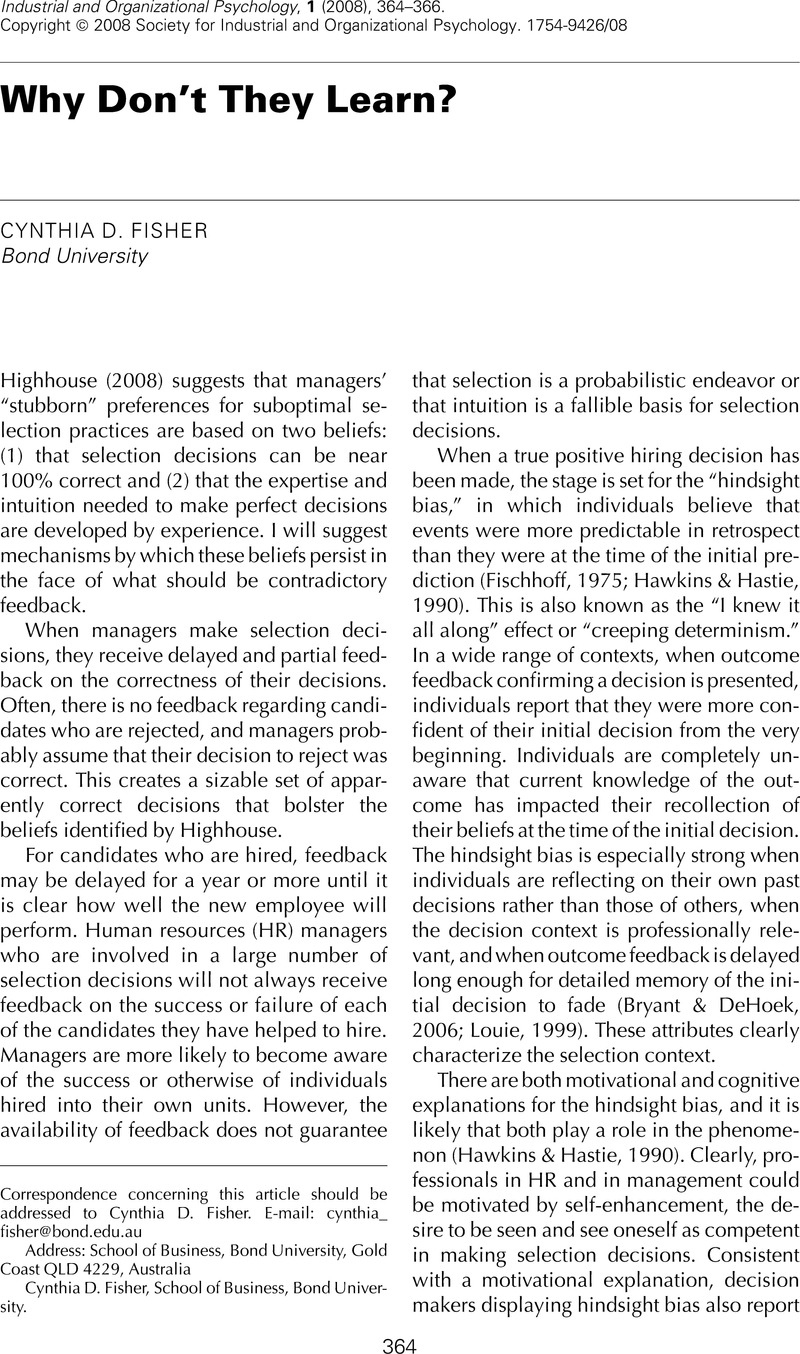Crossref Citations
This article has been cited by the following publications. This list is generated based on data provided by Crossref.
Highhouse, Scott
2008.
Facts Are Stubborn Things.
Industrial and Organizational Psychology,
Vol. 1,
Issue. 3,
p.
373.
Lodato, Michael A.
Highhouse, Scott
and
Brooks, Margaret E.
2011.
Predicting professional preferences for intuition‐based hiring.
Journal of Managerial Psychology,
Vol. 26,
Issue. 5,
p.
352.
Diab, Dalia L.
Pui, Shuang-Yueh
Yankelevich, Maya
and
Highhouse, Scott
2011.
Lay Perceptions of Selection Decision Aids in US and Non-US Samples.
International Journal of Selection and Assessment,
Vol. 19,
Issue. 2,
p.
209.
Miles, Andrew
and
Sadler-Smith, Eugene
2014.
“With recruitment I always feel I need to listen to my gut”: the role of intuition in employee selection.
Personnel Review,
Vol. 43,
Issue. 4,
p.
606.
Burton, Jason W.
Stein, Mari‐Klara
and
Jensen, Tina Blegind
2020.
A systematic review of algorithm aversion in augmented decision making.
Journal of Behavioral Decision Making,
Vol. 33,
Issue. 2,
p.
220.
Neumann, Marvin
Niessen, A. Susan M.
and
Meijer, Rob R.
2021.
Implementing evidence-based assessment and selection in organizations: A review and an agenda for future research.
Organizational Psychology Review,
Vol. 11,
Issue. 3,
p.
205.
Vincent, Vinod U.
Guidice, Rebecca M.
and
Mero, Neal P.
2024.
Should you follow your gut? The impact of expertise on intuitive hiring decisions for complex jobs.
Journal of Management & Organization,
Vol. 30,
Issue. 4,
p.
910.



